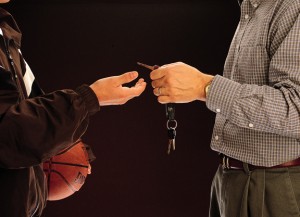Watch for Scams after a Storm
Posted on June 3rd, 2011 in Homeowners Insurance, Personal Insurance | No Comments »
When storms hit, your home—and life—can be turned upside down. You’re eager to get your home repaired, but be careful: some  contractors aren’t really there to help.
contractors aren’t really there to help.
Most contractors are reputable business people. But each year, there are a few dishonest ones who chase storms from state to state. They may try to convince you that you have hail or other damage and need a new roof when you really don’t. They’ll ask to be hired for the work, explaining that your insurance company will pay for the repairs.
Homeowner’s polices cover damage caused by hail and windstorms, but they will not cover the cost to replace a roof or siding when no damage has occurred. Since the work these dishonest contractors offer may not be of the highest quality,We also highly recommends that you get a second—even a third—opinion before starting any contract work. It’s not fair to you to have your roof, once in excellent condition, altered so that it is inferior in quality.
What you can do
If you’re beginning to repair or rebuild after a storm, or even if you are just planning a home improvement project, keep these tips, recommended by the Federal Emergency Management Agency, in mind for choosing contractors wisely:
- Get more than one estimate.
- Don’t be pushed into signing a contract right away.
- Get everything in writing. Cost, work to be done, time schedules, guarantees, payment schedules and other expectations should be detailed.
- Check references before deciding which contractor to choose.
- Never sign a contract with blanks.
- Don’t pay a contractor in full until the work is complete.
- Check with county or city licensing authorities to see if the contractor is licensed in your jurisdiction, as well as checking for complaints with their regional Better Business Bureau.
We can help, too
If you need suggestions about who to hire or how to repair your home after a storm, we can help you contact an insurance claims adjuster. Our companies have professional claims adjusters who are trained to assess your property, identify storm damage and prepare an estimate for proper repair. They can also provide recommendations for reliable, licensed contractors in your area—although the final choice of contractor is always yours.
Contact our agency for more information. 518-389-2455.
